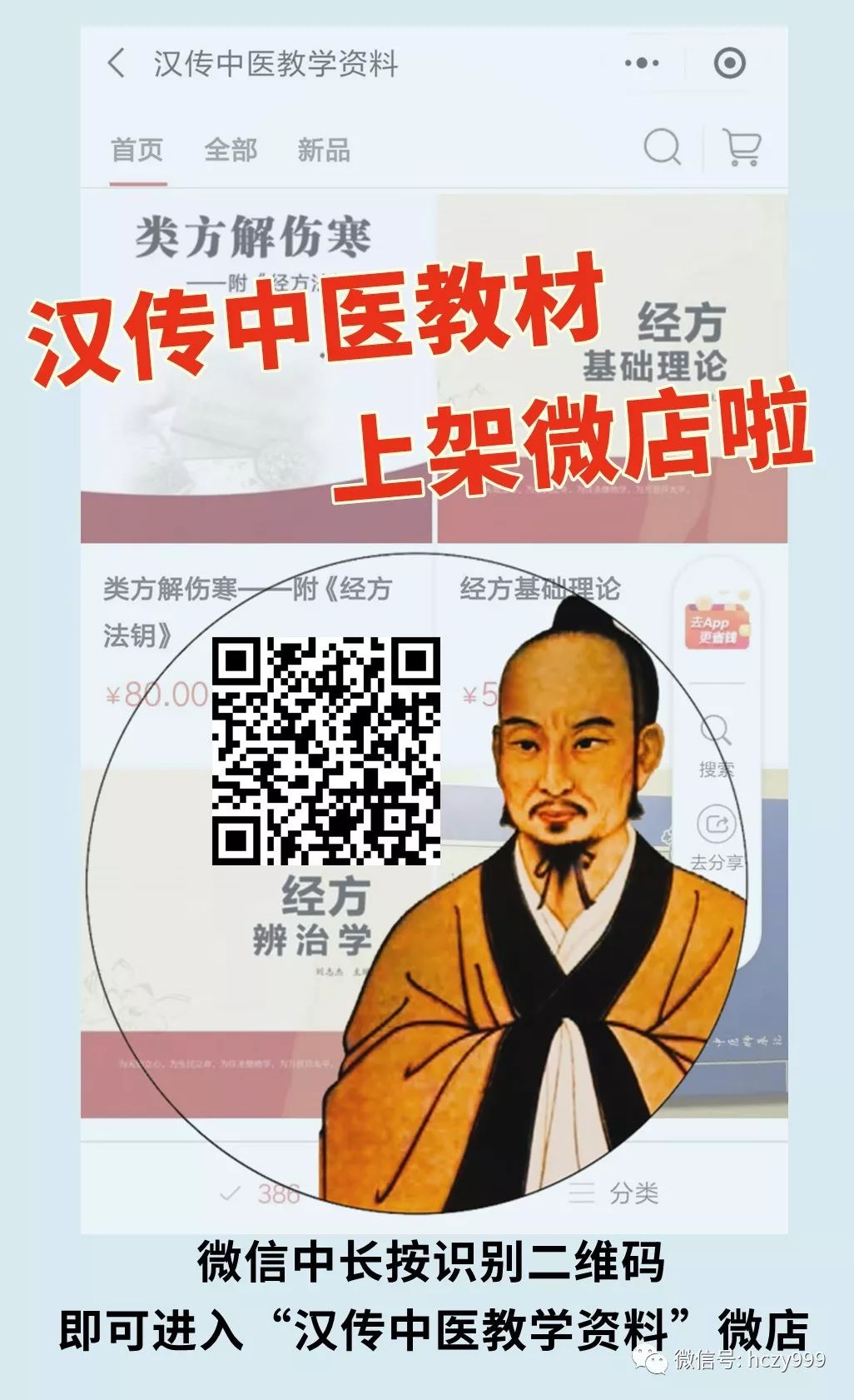1. Concepts and Characteristics
External pathogenic diseases refer to illnesses caused by the invasion of external pathogens. In various TCM literature, external pathogens are classified in multiple ways, such as wind, cold, dampness, heat, dryness, fire, warmth, and heat. According to Han Chinese medicine, these pathogens are categorized into five types based on their cold-heat properties and pathogenic characteristics: Shang Han (Cold Damage), Zhong Feng (Wind Stroke), Zhong Shi (Dampness), Zhong Re (Heat Stroke), and Yi Li (Epidemic Diseases).
These pathogens arise from external environmental factors, leading to common basic symptoms of external pathogenic diseases: fever, chills, and body aches.
External pathogenic diseases develop rapidly, and if not treated promptly, they can quickly lead to “transformation.” For example, when external pathogens invade the body, they can trigger various diseases, and there is no absolute pattern of transformation for external pathogenic diseases, which exhibit random transformation characteristics.
External pathogenic diseases often combine with internal injuries, resulting in “combined syndromes.” For instance, a patient with a history of internal phlegm-dampness who coughs and wheezes may also suffer from an external cold invasion; or a patient with internal heat in the Yangming channel who contracts an external wind stroke, which can exacerbate the condition and complicate the diagnosis. Many pre-existing internal injuries can also be aggravated by external pathogenic diseases.
Additionally, the external pathogenic diseases discussed in classical formulas encompass modern infectious diseases and epidemics, such as dysentery, cholera, and malaria, which are all classified under external pathogenic diseases.
2. Classification of External Pathogenic Diseases
Shang Han: External cold pathogens, constrained at the muscle surface, obstructing and not allowing flow.
Zhong Feng: External wind pathogens, binding at the surface, allowing for some flow but not smooth.
Zhong Shi: External damp pathogens, water and dampness accumulating at the surface, causing stagnation.
Zhong Re: External warm and hot pathogens, which accumulate at the muscle surface and injure body fluids and blood.
Yi Li: Infectious external pathogenic diseases, which develop rapidly, are highly contagious, and can affect the surface, interior, or both simultaneously.
(Details omitted)
The pathogenic characteristics of external wind, cold, and dampness discussed in classical formulas are generally consistent with the content taught in current TCM medical school textbooks, and will not be elaborated further.
The heat, dryness, and fire (heat) pathogens among the six excesses of external pathogens are classified as warm pathogens in classical formulas. The term Re (heat) is defined in the Shuo Wen Jie Zi as: “Re, injury from heat,” meaning that the original meaning of Re is “heat.” Therefore, Han Chinese medicine collectively refers to diseases caused by external warm pathogens as Zhong Re, which includes heat stroke.
Zhong Re is caused by warm pathogens injuring the surface. The typical symptoms of Taiyang Zhong Re include fever, sweating, a preference for coolness, thirst, and a dislike of cold, while Shaoyin Zhong Re presents with aversion to cold, low fever, sweating, and a dry mouth with no desire to drink. Additionally, because it is an external pathogen, common symptoms such as “head and body aches and dizziness” are often present. Furthermore, warm pathogens frequently carry wind pathogens, often presenting with mild aversion to wind and cold symptoms of wind stroke.
For example, in Taiyang disease caused by external warm pathogens, there will inevitably be fever and sweating, with open pores, and patients often prefer cool breezes, which can lead to the presence of wind pathogens. After falling ill, in addition to fearing heat, there may also be symptoms of aversion to wind and cold, referred to as “wind warmth,” which is commonly seen in clinical practice.
3. Conceptual Differences Between External Pathogenic Diseases and Internal Injury Diseases
In classical formula medicine, external pathogenic diseases and internal injury diseases have their own independent diagnostic frameworks.
External Pathogenic Diseases refer to diseases caused by the invasion of external pathogens.
Internal Injury Diseases, also known as “ben disease,” are diseases without external symptoms caused by internal or external factors. Internal injury diseases and external pathogenic diseases are relative concepts.
The works of the medical sage Zhang Zhongjing, particularly the Shang Han Lun, focus on the framework of external pathogenic diseases, while the Jin Gui Yao Lue primarily centers on internal injury diseases, which scholars must clearly understand.
The Shang Han Lun mainly discusses various transformation situations of external pathogenic diseases and their treatments. Later generations of physicians have mistakenly conflated the basic concepts of external pathogenic diseases and internal injury diseases, such as treating Taiyang external pathogenic diseases (Taiyang wind, Taiyang cold damage, etc.) as Taiyang internal diseases, while Taiyang internal diseases (excess heat syndrome) have been misclassified as external symptoms of Yangming disease.
In ancient times, external pathogenic diseases were collectively referred to as “Shang Han,” meaning “there are five types of cold damage: wind stroke, cold damage, damp warmth, heat disease, and warm disease, each with different sufferings.” However, later physicians misunderstood that the Shang Han Lun only discusses cold damage and does not address external warm diseases. In fact, both external warm pathogens and other conditions such as wind warmth, Zhong Re, malaria, dysentery, and convulsive syndromes are discussed in both the Shang Han Lun and the Jin Gui Yao Lue, including certain conditions classified under the three Yang categories, all of which belong to the category of external warm diseases. This misunderstanding among later physicians studying the theories of the Shang Han Lun is a significant issue that must be thoroughly corrected. Only with clear concepts can clinical differentiation and treatment be accurate and efficient.
Another point of confusion between external pathogenic diseases and internal injury diseases is that classical formula medicine refers to Taiyang internal diseases as “warm diseases (fan warm syndrome),” while the external warm pathogens of Taiyang are referred to as “Zhong Re.” Although the clinical symptoms may appear similar, their essence is not the same (specific discussions can be found in the relevant chapters of the next article).
Clearly distinguishing between external pathogenic diseases and internal injury diseases (ben diseases) in terms of surface symptoms has significant theoretical and clinical implications: first, it clarifies the diagnostic frameworks of external pathogenic diseases and internal injury diseases, making the classical formula differentiation and treatment theoretical framework systematic and standardized; second, it correctly guides clinical differentiation and treatment, avoiding misdiagnosis and treatment errors that could lead to other syndromes.
4. Important Differences in Surface Symptoms Between External Pathogenic Diseases and Internal Injury Diseases
Due to the independent diagnostic frameworks of external pathogenic diseases and internal injury diseases, especially between Taiyang external pathogenic diseases and Taiyang internal injury diseases, as well as between Shaoyin external pathogenic diseases and Shaoyin internal injury diseases, which both fall under surface symptoms, the concepts are easily confused. Therefore, external pathogenic diseases must be listed separately and clearly defined in relation to internal injury diseases, allowing the classical formula differentiation and treatment theoretical framework to be clear and standardized.
Wind, cold, dampness, heat, and epidemics are all external pathogenic factors that arise from external environmental influences. Among them, wind, cold, dampness, and heat can only invade the surface of the body, meaning that the disease first injures the surface, classified as “surface diseases.” The Taiyang internal injury diseases and Shaoyin internal injury diseases also have their disease locations at the surface, thus also classified as “surface diseases.”
Therefore, both external pathogenic diseases and internal injury diseases located at the surface are collectively referred to as surface symptoms in Han Chinese medicine. That is, surface symptoms include internal injury diseases (Taiyang internal injury diseases, Shaoyin internal injury diseases) and external pathogenic diseases (wind, cold, dampness, heat).
In terms of surface disease locations, including the surface Yang of Taiyang disease and the surface Yin of Shaoyin disease, if they are broadly referred to as “Taiyang disease” or “Shaoyin disease,” it is easy to confuse the concepts of external pathogenic diseases and internal injury diseases.
Therefore, Han Chinese medicine divides Taiyang diseases into “Taiyang internal diseases” and “Taiyang external pathogenic diseases”; Shaoyin diseases into “Shaoyin internal diseases” and “Shaoyin external pathogenic diseases” (see Table 5-6).
(Details omitted)
5. Relationship Between External Pathogenic Diseases and Internal Injury Surface Symptoms
The wind, cold, dampness, and heat of external pathogenic diseases essentially refer to the four pathogenic factors that the body perceives due to external environmental or climatic influences.
These four pathogenic factors first injure the surface, so the body’s surface adjustment system will first resist these pathogens. In the Fundamental Theories of Classical Formulas, it is mentioned that Taiyang and Shaoyin are the two major regulatory systems that share the surface, maintaining a relative balance of Yin and Yang at the muscle surface.
When external pathogens injure the surface Yang, the “Taiyang” self-regulating system will resist it, leading to the simultaneous occurrence of the symptomatic characteristics of the “Taiyang” disease location (Taiyang disease mechanism) and the external pathogen symptoms; or a pre-existing surface excess heat Taiyang disease mechanism may simultaneously experience external pathogens, leading to a combination of symptoms.
When external pathogens injure the surface Yin, the “Shaoyin” self-regulating system will resist it, leading to the simultaneous occurrence of the symptomatic characteristics of the “Shaoyin” disease location (Shaoyin disease mechanism) and the external pathogen symptoms; or a pre-existing surface deficiency cold Shaoyin disease mechanism may simultaneously experience external pathogens, leading to a combination of symptoms.
The essence of the symptomatic manifestations of external wind, cold, dampness, and heat is the combined relationship between external pathogenic diseases and internal injury surface symptoms, also referred to as the combination of internal injury surface symptoms with external wind, cold, dampness, and heat diseases.
Thus, the external pathogenic diseases of surface symptoms are divided into “Taiyang external pathogenic diseases” and “Shaoyin external pathogenic diseases.”
6. The Yin-Yang Attribution of External Pathogenic Diseases
Details omitted, see the Study of Classical Formulas textbook for more information.
7. Combined Syndromes of External Pathogenic Diseases
Details omitted, see the Study of Classical Formulas textbook for more information.
8. Principles of Differentiation and Treatment for External Pathogenic Diseases
Details omitted, see the Study of Classical Formulas textbook for more information.
——Excerpt from Study of Classical Formulas, Chapter 5, Section 1


